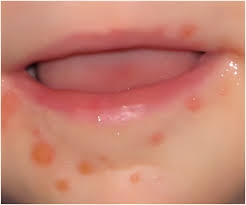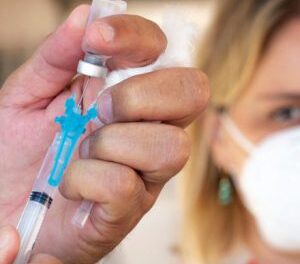Copenhagen, 25 September 2024
New data from the WHO Regional Office for Europe reveals a sharp rise in problematic social media use among adolescents, with rates increasing from 7% in 2018 to 11% in 2022. This, coupled with findings that 12% of adolescents are at risk of problematic gaming, raises urgent concerns about the impact of digital technology on the mental health and well-being of young people. These findings come from the Health Behaviour in School-aged Children (HBSC) study, which surveyed almost 280 000 young people aged 11, 13 and 15 across 44 countries and regions in Europe, central Asia and Canada in 2022.
Key findings include:
- More than 1 in 10 adolescents (11%) showed signs of problematic social media behaviour, struggling to control their use and experiencing negative consequences. Girls reported higher levels of problematic social media use than boys (13% vs 9%).
- Over a third (36%) of young people reported constant contact with friends online, with the highest rates among 15-year-old girls (44%).
- A third (34%) of adolescents played digital games daily, with more than 1 in 5 (22%) playing for at least 4 hours on days when they engage in gaming.
- 12% of adolescents are at risk of problematic gaming, with boys more likely than girls to show signs of problematic gaming (16% vs 7%).
The report defines problematic social media use as a pattern of behaviour characterized by addiction-like symptoms. These include an inability to control social media usage, experiencing withdrawal when not using it, neglecting other activities in favour of social media, and facing negative consequences in daily life due to excessive use.
Implications of increased problematic social media use
The rise in problematic social media use among adolescents raises significant concerns about potential impacts on young people. Previous research has found that problematic social media users also reported lower mental and social well-being and higher levels of substance use compared to non-problematic users and non-users. This trend, if continued, could have far-reaching consequences for adolescent development and long-term health outcomes. Moreover, problematic social media use has been associated with less sleep and later bedtimes, potentially impacting adolescents’ overall health and academic performance.
“It’s clear that social media can have both positive and negative consequences on the health and well-being of adolescents,” noted Dr Hans Henri P. Kluge, WHO Regional Director for Europe. “That’s why digital literacy education is so important. Yet it remains inadequate in many countries, and where it is available, it often fails to keep pace with young people and rapidly evolving technology. We are seeing the consequences of this gap, with worse likely to come, unless governments, health authorities, teachers and parents recognize the root causes of the current situation and take steps to rectify it. As millions of children across the Region return to school after the summer holidays, some countries are considering restrictions or outright bans on social media for children up to a certain age. It’s clear we need immediate and sustained action to help adolescents turn the tide on potentially damaging social media use, which has been shown to lead to depression, bullying, anxiety and poor academic performance.”
Positive aspects of social media use
While the report highlights the risks, it also underscores the benefits of responsible social media use. Adolescents who are heavy but non-problematic users reported stronger peer support and social connections.
As one 17-year-old boy from Poland shared, “There are many benefits of social media, especially when it is used in moderation. Among the benefits, there is connection and connectedness. Teenagers may meet others who share their passions and interests”.
“This study reveals both the promise and the pitfalls of digital engagement for our young people,” said Dr Natasha Azzopardi-Muscat, Director for Country Health Policies and Systems, WHO Regional Office for Europe. “It’s crucial that we take steps to protect youth to allow them to navigate the digital landscape safely and equip them to make informed choices about their online activities, maximizing the benefits while minimizing the risks to their mental and social well-being. In short, they should rule social media, and not have social media ruling them.”
Gaming trends and their implications
The report also reveals that 34% of adolescents play digital games daily, with 22% playing for at least 4 hours on gaming days. While 68% were classified as non-problematic gamers, 12% were at risk of problematic gaming.
A previous HBSC study examining problematic online gaming behaviour in five countries found associations with lower life satisfaction, more frequent psychological complaints and lower peer support. However, for many adolescents, gaming remains a harmless or even beneficial pastime.
Dr Claudia Marino, one of the report authors at the University of Padova, noted: “The gender differences in gaming patterns are striking. Boys not only show higher rates of daily gaming but are also more likely to develop problematic gaming habits. This highlights the need for targeted interventions that consider gender-specific motivations and risk factors in gaming behaviour”.
Targeted interventions
Interventions to address problematic social media use should be age-appropriate, gender-sensitive and culturally tailored. They should focus on helping young people develop digital literacy skills, promote healthy online behaviours and provide support for those at risk of problematic use.
As one boy from England suggested, “I think it is more important to make social media better and safer, and teach people how to use it safely and to look after themselves”.
This highlights the need for improved digital environments and education that empower young people to navigate online spaces safely.
Roadmap for action
While the findings are sobering, they also offer a roadmap for the way ahead. The WHO Regional Office for Europe – covering Europe and central Asia – calls upon policy-makers, educators and health-care providers to prioritize adolescent digital well-being with the following specific calls to action:
- Invest in a health promoting school environment, in which digital literacy education is embedded. Implement evidence-based programmes in schools covering responsible social media use, online safety, critical thinking skills and healthy gaming habits.
- Enhance mental health services. Ensure access to confidential, non-judgmental and affordable mental health services which can address issues arising from problematic digital technology use.
- Promote open dialogue. Encourage conversations about digital well-being within families, schools and communities to reduce stigma and increase awareness.
- Train educators and health-care providers. Provide specialized training to deliver effective and inclusive digital literacy education and support.
- Enforce platform accountability. Ensure social media platforms enforce age restrictions and create a regulatory framework encouraging responsible design of digital tools for young users.
“Ultimately, what we are seeking to achieve for our children is a solid foundation for life in the digital age, something social media companies and young people alike are beginning to acknowledge and act upon around the world,” concluded Dr Kluge. “Digital literacy in the context of child development and well-being, informed by the right knowledge at the right time along with the right health and other support services, are critical. By empowering adolescents to make informed decisions about their online activities, balancing their online and offline worlds, we ultimately help safeguard and improve their overall well-being. This is crucial for ensuring a healthier, more balanced digital future for all communities, societies and countries.”











